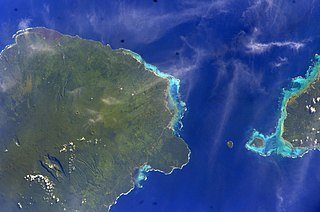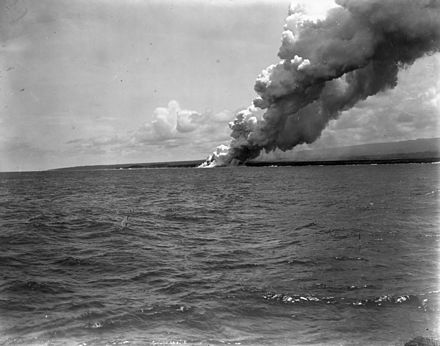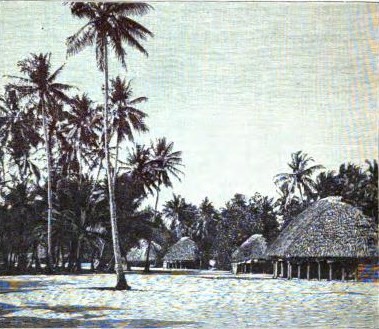
Savaiʻi is the largest and highest island in Samoa and the Samoan Islands chain. The island is the sixth largest in Polynesia, behind the three main islands of New Zealand and the Hawaiian Islands of Hawaii and Maui.

Samoa is made up of eleven itūmālō. These are the traditional eleven districts that were established well before European arrival. Each district has its own constitutional foundation (faavae) based on the traditional order of title precedence found in each district's faalupega.

Tuamāsaga is a district of Samoa, with a population of 95,907. The geographic area of Tuamasaga covers the central part of Upolu island.

Fa'asaleleaga is a district of Samoa situated on the eastern side of Savai'i island. It has a population of 13,566.
Salamumu is a village on the south west coast of Upolu island in Samoa. The village has two settlements, Salamumu Uta and Salamumu Tai.
Matautu is the name of different villages in Samoa. Places named Matautu are found on the two largest islands, Upolu and Savai'i.

Sale'aula is a village on the central north coast of Savai'i island in Samoa and is the traditional center of the Gaga'emauga political district. Chief council meetings are held at Vaitu’utu’u malae in the village.

Not to be confused with Fagamalo, American Samoa

Sato'alepai is a village situated on the central north coast of the island of Savai'i in Samoa. Sato'alepai is in the political district of Gaga'emauga.

Mt Matavanu is an active volcano on the island of Savai'i in Samoa.
Mauna Afi is a volcanic mountain on the island of Savai'i in Samoa. Its name means Burning Mountain or Mountain of Fire, from the Samoan language mauga (mountain) and afi (fire).

Mauga is a village in Savai'i island in Samoa. The word mauga means mountain in the Samoan language. The settlement is built around the crater of a small volcano. Mauga is in the Gaga'emauga political district near the central north coast of the island. The large meeting houses of the village are situated in a circle facing each other around the rim of the crater which can be seen in high altitude photography.

Samalae'ulu is a village on the northeast side of Savai'i island in Samoa. The village is part of the electoral constituency Gaga'emauga I which includes the neighbouring villages of Patamea and the smaller settlement of Mauga which is built around a volcanic crater.

Avao is a village on the north central coast of Savai'i island in Samoa. The village is part of the electoral constituency Gaga'emauga III, which is included in the larger political district of Gaga'emauga.

Lelepa is a village on the north central coast of Savai'i island in Samoa. The village is part of the electoral constituency Gaga'emauga III which forms part of the larger political district of Gaga'emauga.
Saleia is a village on the north central coast of Savai'i island in Samoa. The village is part of the electoral constituency Gaga'emauga III which forms part of the larger political district of Gaga'emauga.
Safa'i is a village on the north central coast of Savai'i island in Samoa. The village is part of the electoral constituency Gaga'emauga III which forms part of the larger political district Gaga'emauga.

Le'auva'a is a village on the island of Upolu in Samoa. The population is 3,041.

Vaipouli College is a secondary school on Savai'i island in Samoa. The college is co-educational, open to male and female students from Year 9 - 13. The college is also known as Salafai College, in reference to Salafai, another name for the island of Savai'i.

















